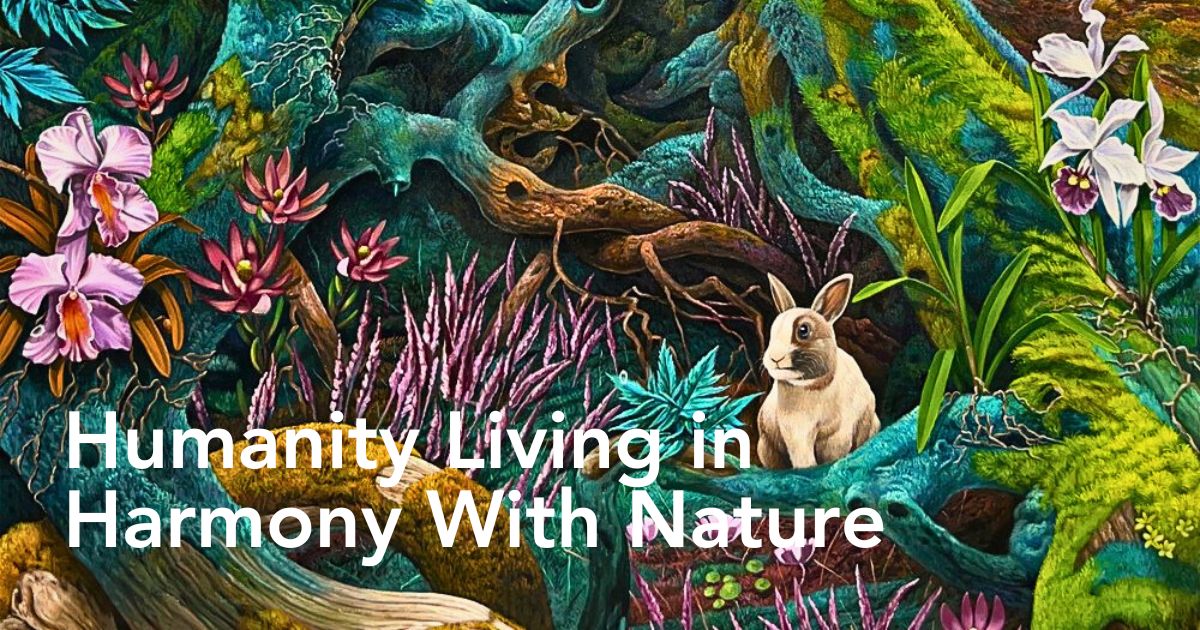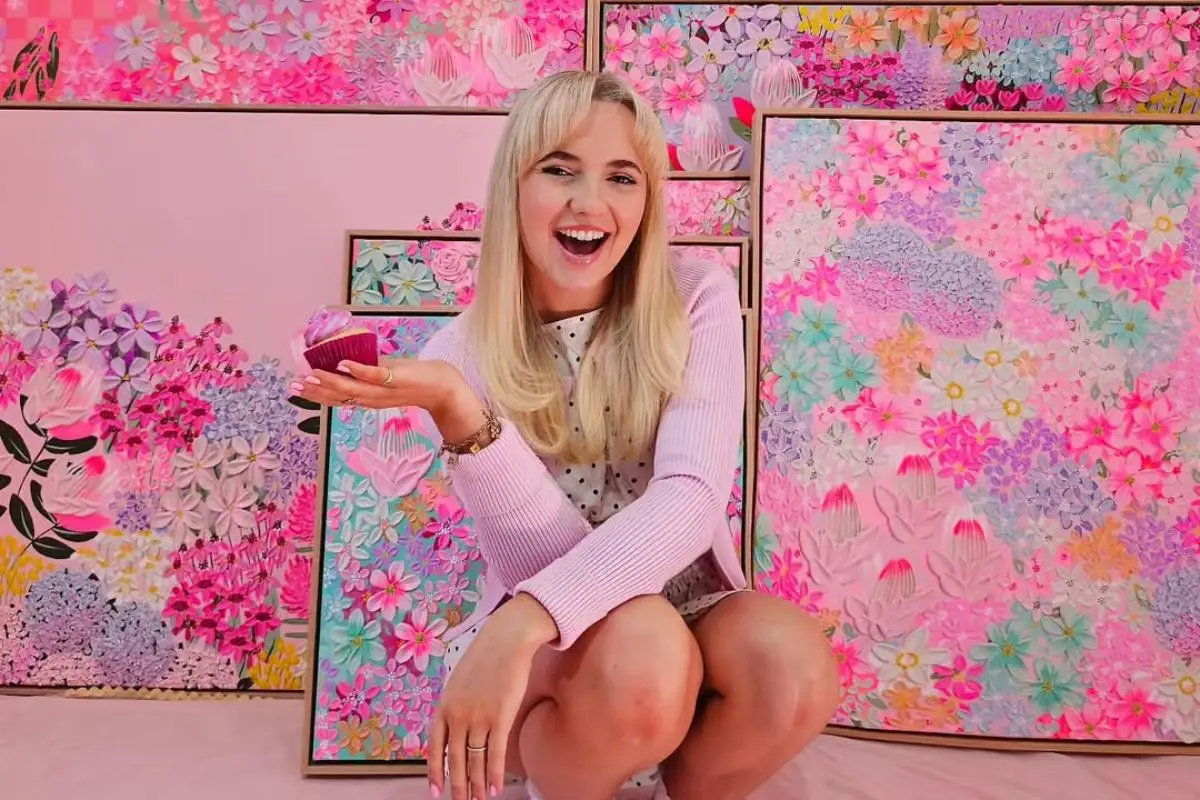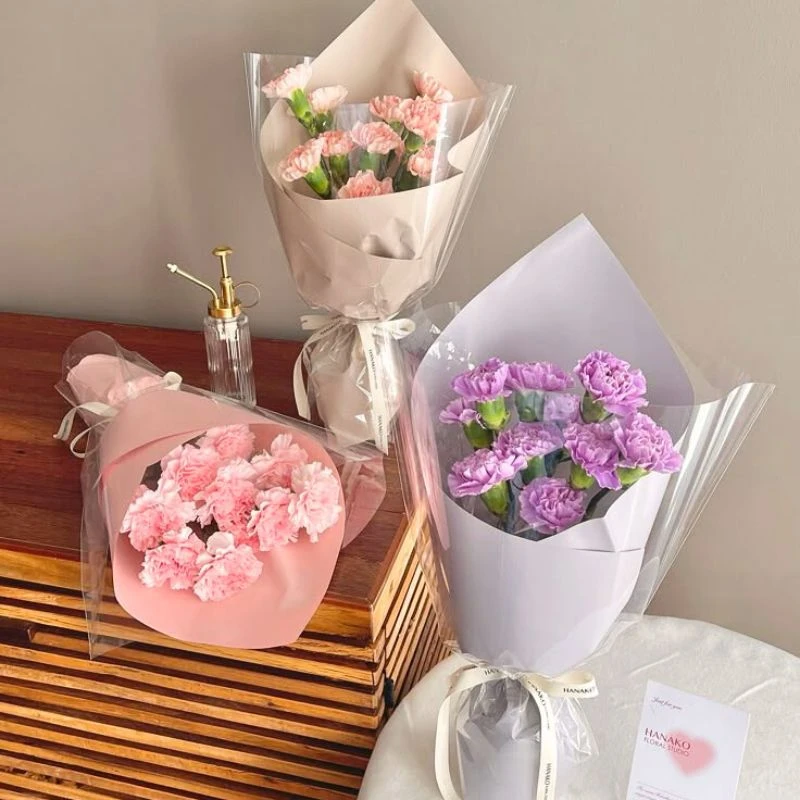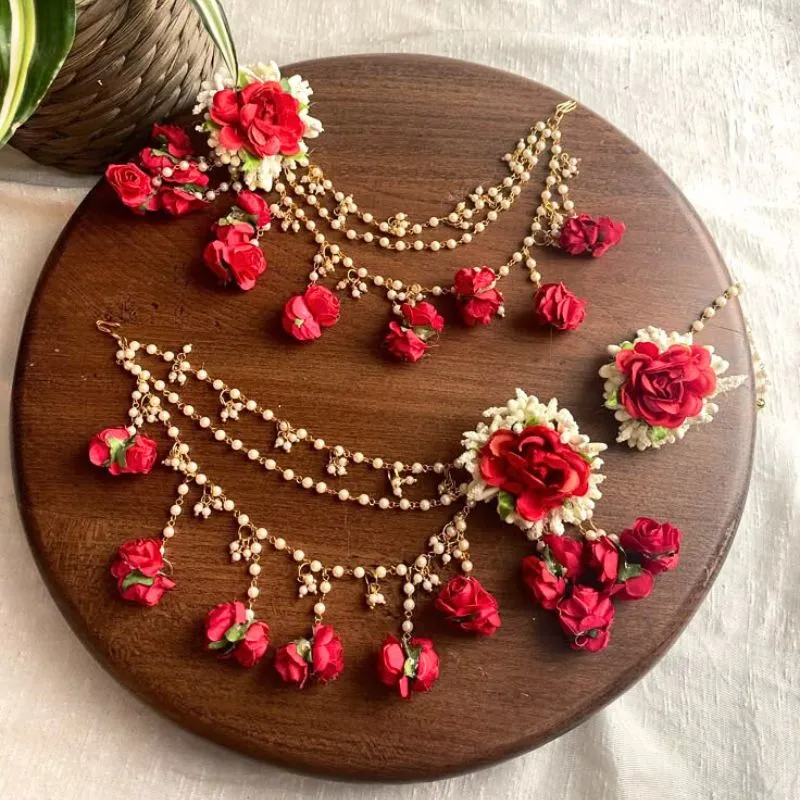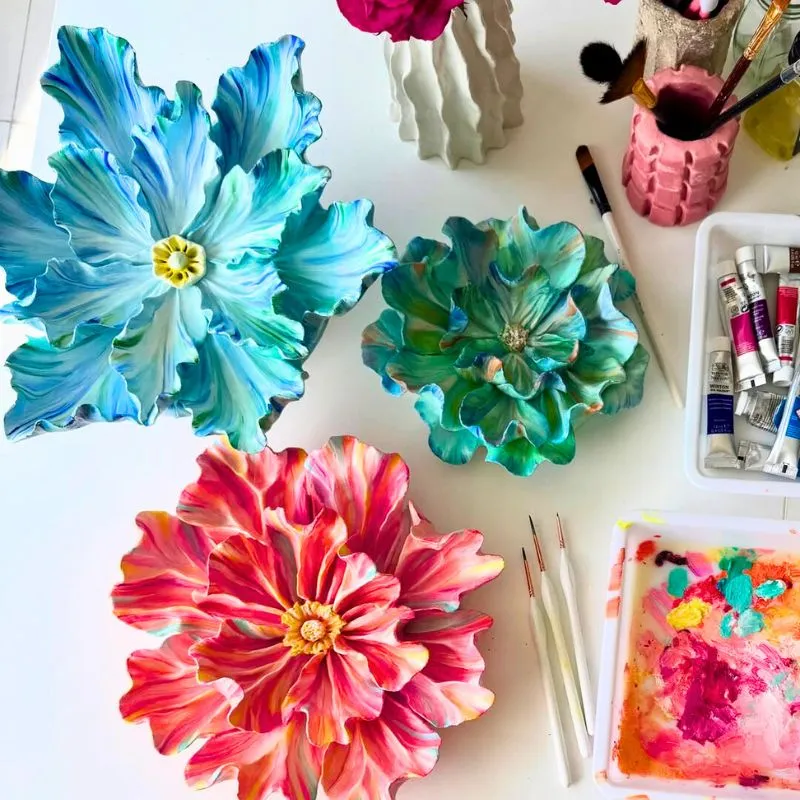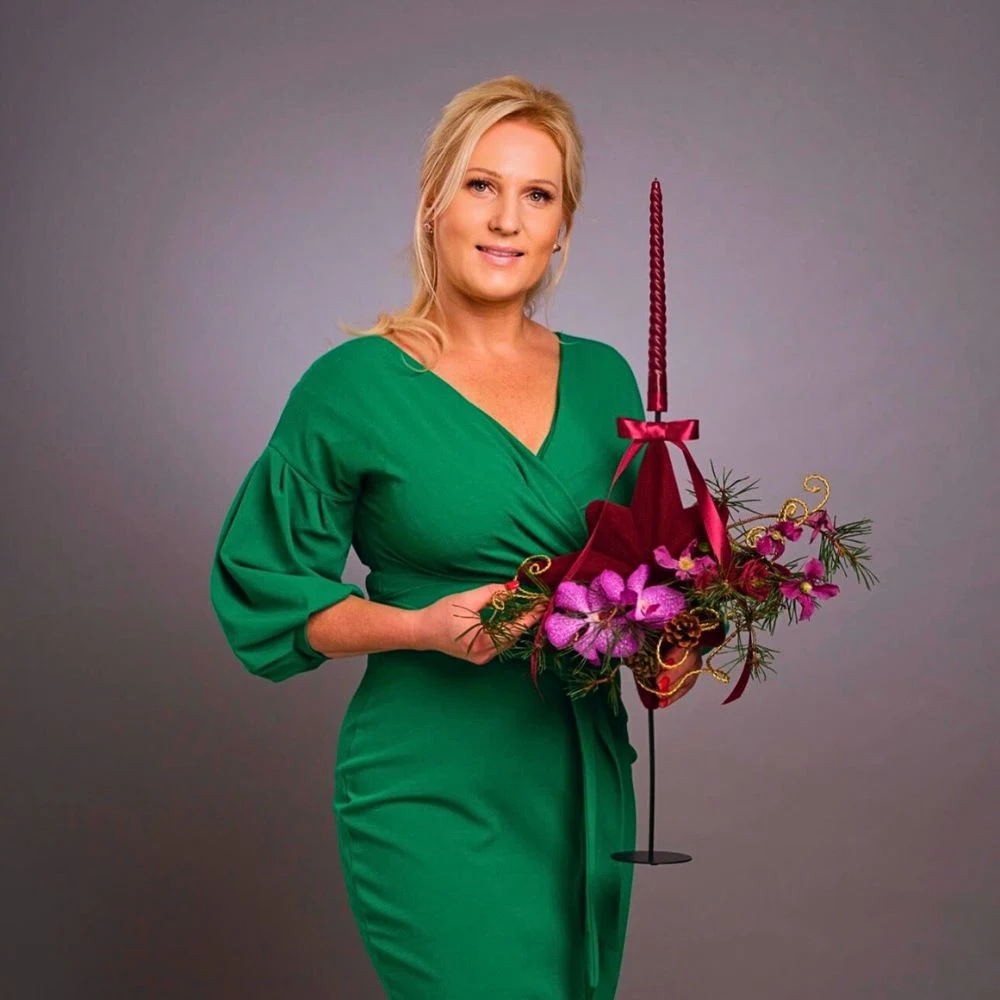Born in 1985 in Denpasar, the capital of the province of Bali, Indonesian artist Agus Putu Suyadnya is one whose amalgamation of realistic and expressionist artistic styles hardly eschews criticism. His pieces are, in fact, intended as social criticisms. The artist whose paintings have been exhibited widely tends to start out from the anxiety about the disharmony between humans and nature, and becomes more vested in exploring the causal relationships resulting from destructive human behavior.
The Artist Whose Tropical Ecosystems Become Sanctuaries for Humanity to Reconnect With Nature
Agus lives and works in Yogyakarta, Indonesia, where, between 2003 and 2010, studying fine arts academically, he obtained a Bachelor of Fine Arts degree at Yogyakarta Indonesian Institute of Arts. In the past few years, he has created intense social criticism artworks, largely using awakening majas that contain satire.
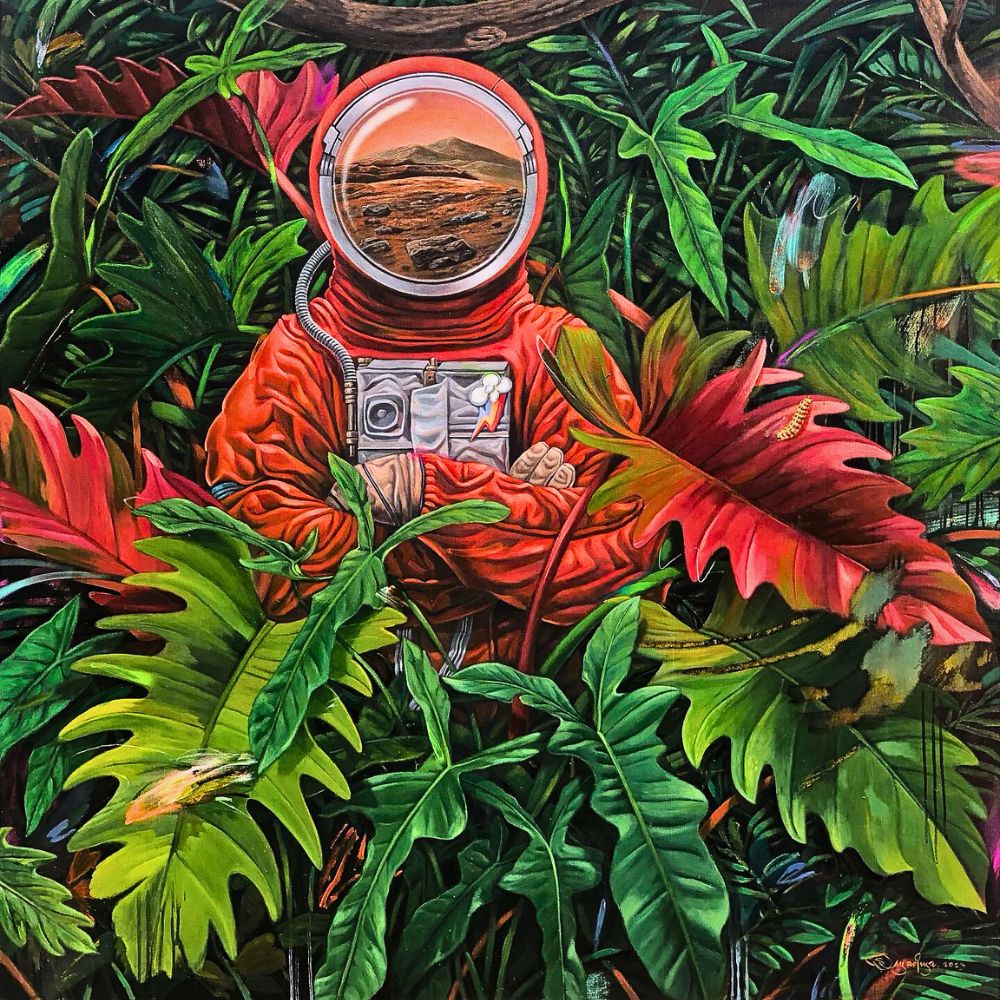
He poetically visualizes and portrays the impact of caustic human behavior in artistic processes in which he employs mixed media, including acrylics, charcoal, and spray paint. As such, his paintings become a simulation of spaces and an imaginary contemplation.
In his latest art exhibition currently on view at the Sapar Contemporary Art Gallery in New York City, Agus showcases a vision of humanity living in harmony with nature. The exhibition, titled ‘Symbiotic Utopia – The Peaceable Kingdom of Agus Putu Suyadnya,’ presents lush, surreal landscapes that explore the relationship between humans and the natural world, with a focus on ecological wealth and its fragility.
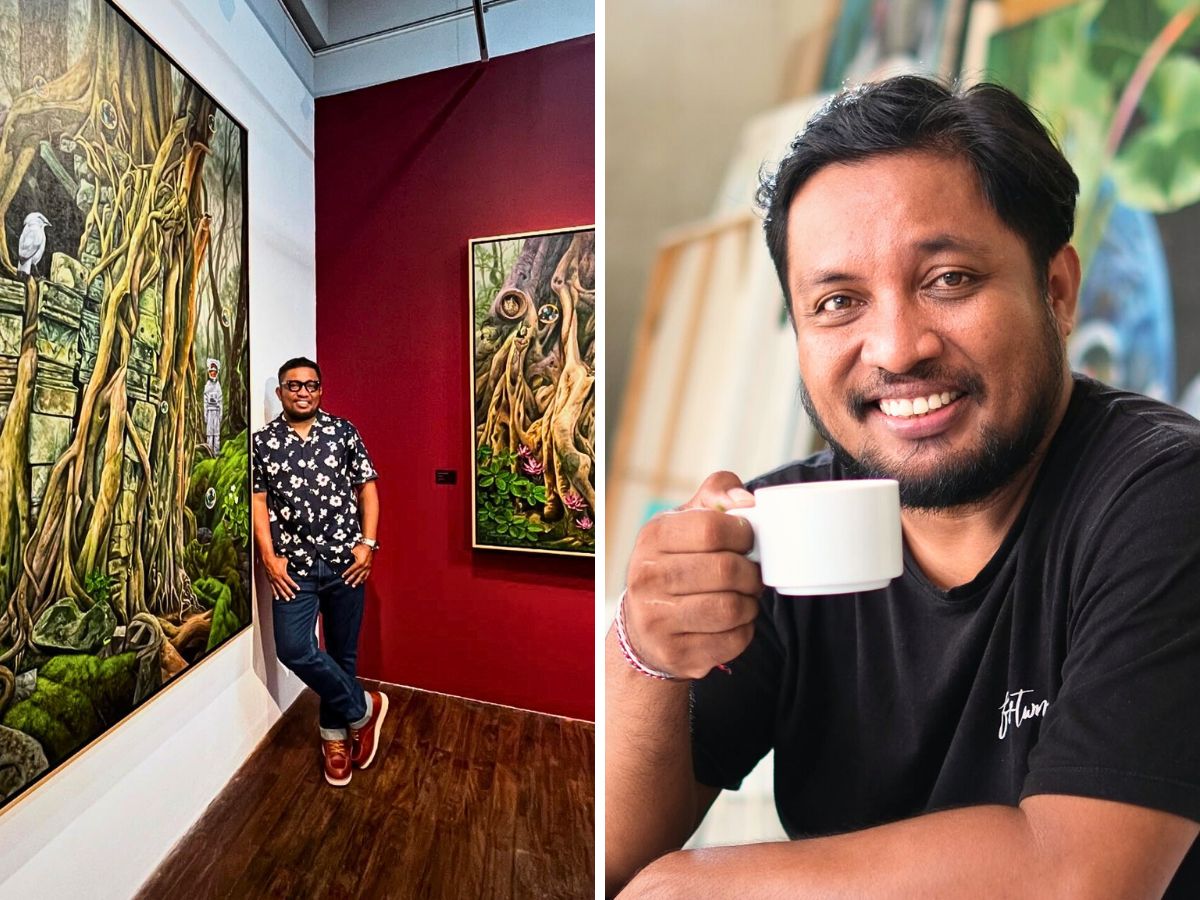
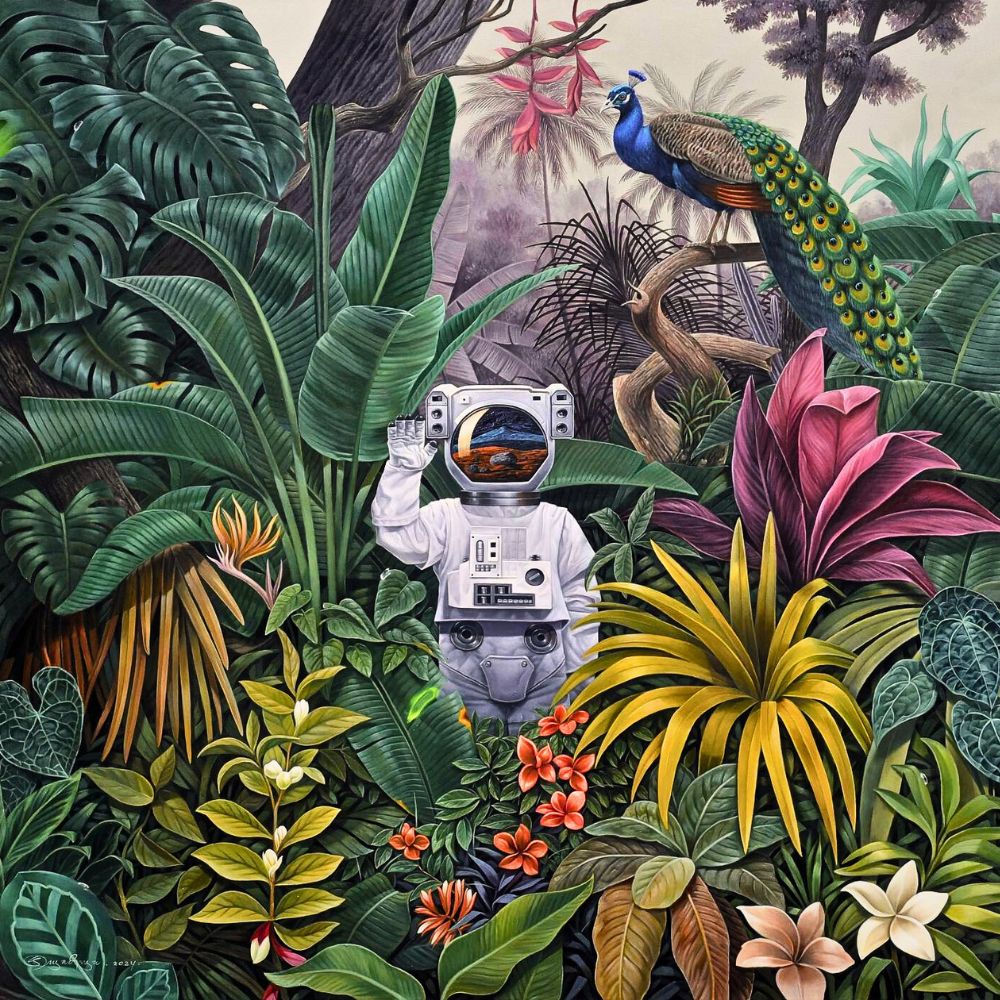
Symbiotic Utopia—a metaphor for a future in which humanity lives in balance with nature—envisions a setting where tropical ecosystems reminiscent of Southeast Asia become refuges for humanity to reconnect deeply with nature. The paintings prod audiences to enter into lush, otherworldly sceneries teeming with thriving foliage and fauna, and glowing moss-covered roots, and where a recurring figure—an astronaut clad in a protective suit—moves with serene familiarity through the surreal settings.
One such piece depicts the familiar astronaut figure gently cradling a chimpanzee, while another shows the figure playfully waving a large bubble wand, sending iridescent orbs drifting through the air. In yet another, the astronaut holds a pot with a blooming yellow flower as if presenting it to a wading bird right in front of him. In the piece titled Self-Healing (2022), the astronaut reclines in a comfortable chair beside a large potted plant, but the setting is not that of a cozy living room—it is the moon, with the Earth’s atmosphere visible in the background. This collocation of domestic tranquility and cosmic isolation highlights the fragile relationship between humanity and the natural world.
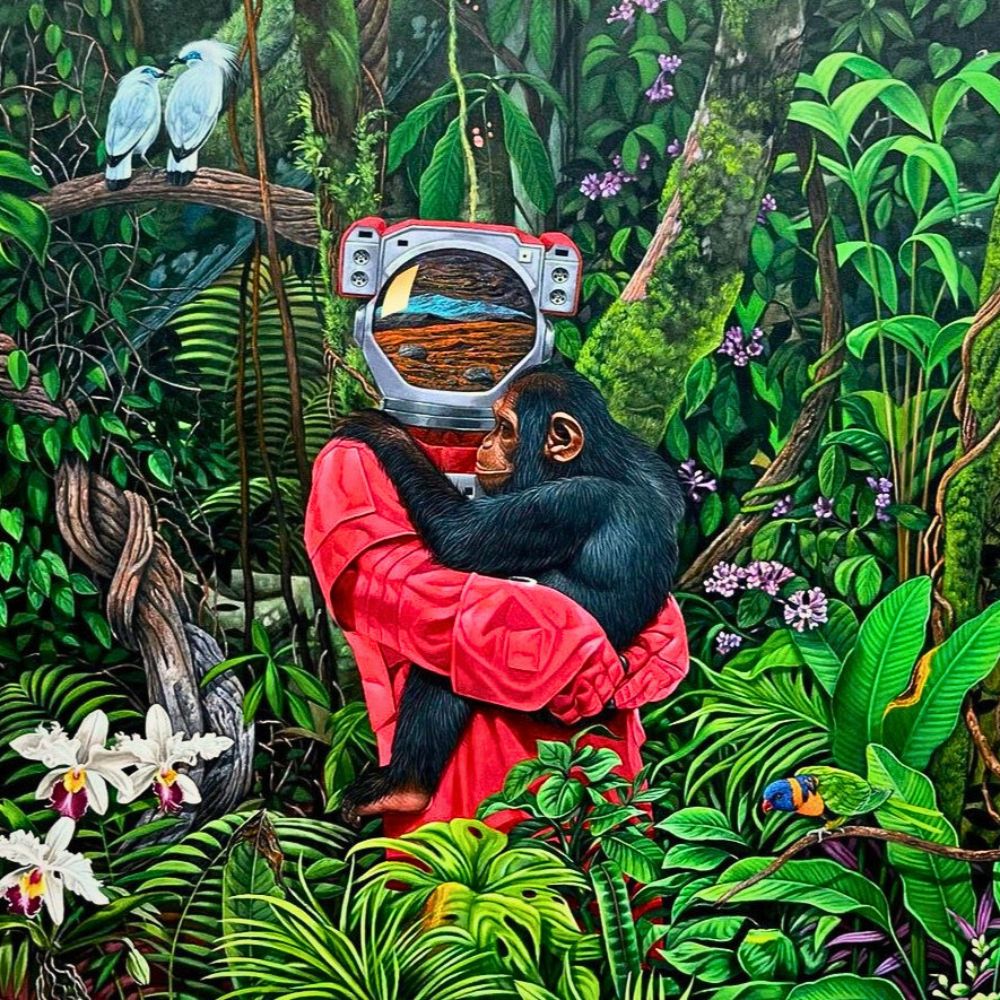
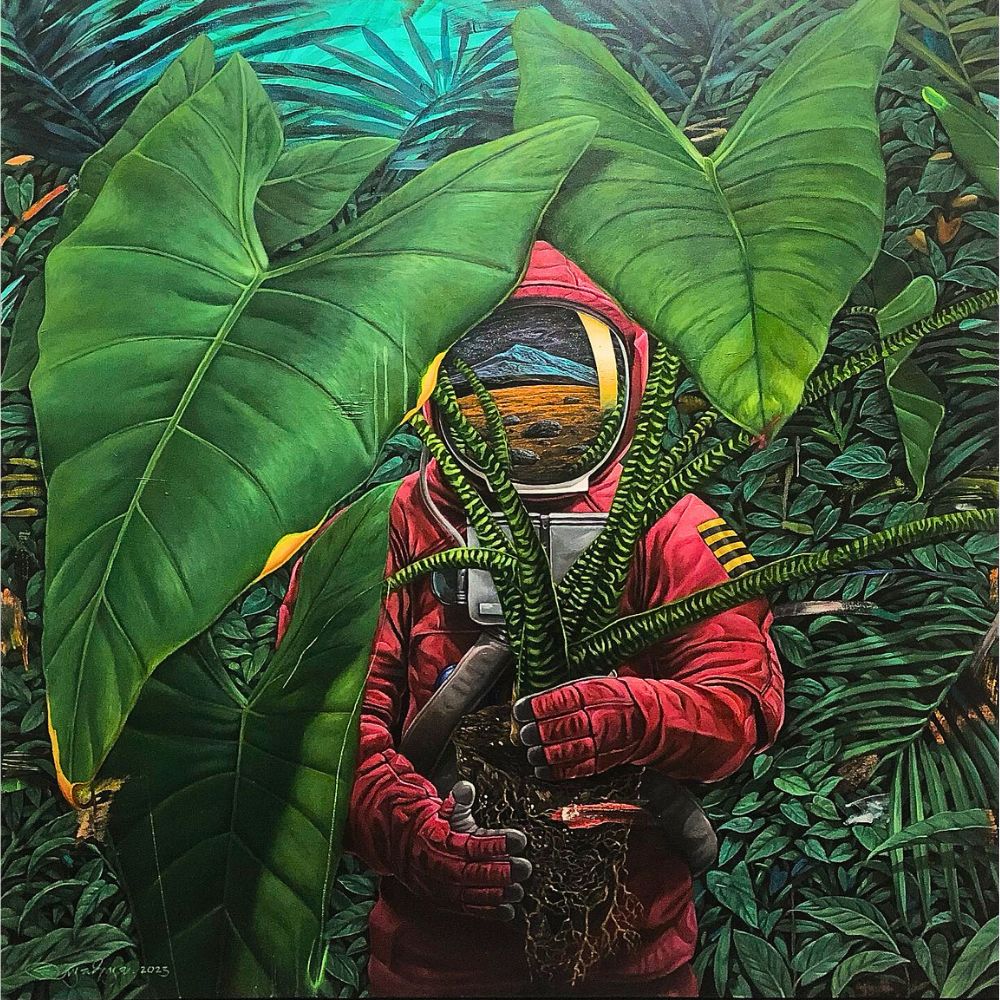
While Agus’ paintings fascinate with their rich colors and dense textures, they also carry an unsettling message about the future. The astronaut’s fully enclosed suit is a symbol: more like a necessary adaptation for survival in a world that is, perhaps, irreparably altered by elements like climate change or human-driven activities.
Agus Putu Suyadnya:
"Humans cannot live without nature, whereas the natural world without mankind will continue to survive. So why, as humans, do we think we have the upper hand?”
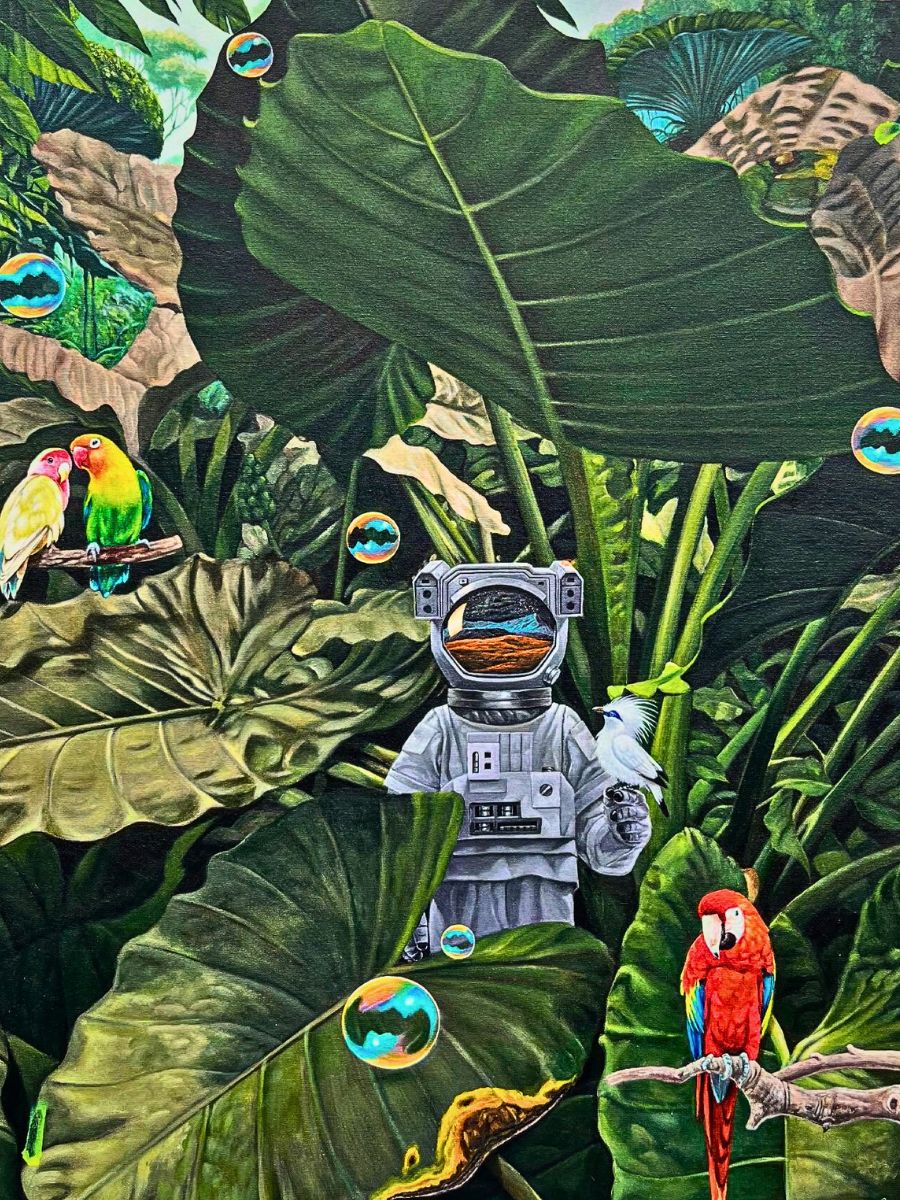
A Style That Blends Impressionistic Brushwork With Realistic Detail
Throughout his career, Agus has developed a style that blends impressionistic brushwork with realistic detail, often using acrylic and pencil on canvas. His art is a medium through which he expresses his reflections on life, spirituality, and the environment, urging the observer to explore their own inner experiences.
He draws inspiration from a wide range of sources. International masters like Michelangelo, Claude Monet, and Gustave Courbet have influenced his artistic approach, as have Indonesian luminaries like Gusti Nyoman Lempad, Affandi, and Nyoman Masriandi. These figures have not only shaped his aesthetic sensibility but also driven his purpose to pursue art as a lifelong vocation.
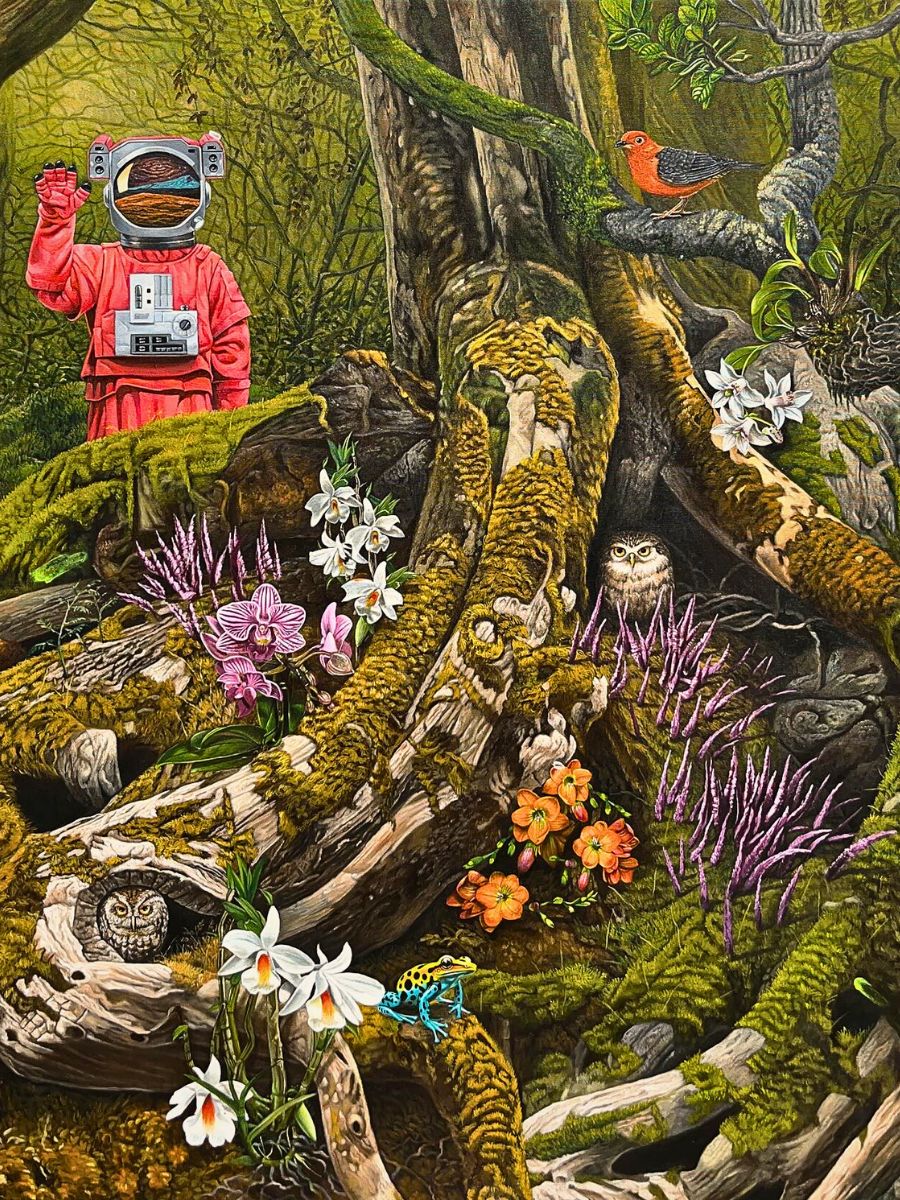
His work is not only deeply rooted in the natural world but also in the spiritual philosophy of his Balinese heritage, particularly the concept of Tri Hita Karana, which emphasizes harmony with the divine (Parahyangan), harmony with other humans (Pawongan), and harmony with nature (Palemahan). This philosophy is deeply ingrained in their culture, influencing their daily life, traditions, and rituals. This triadic balance is boldly expressed in his paintings, which often depict the complex interaction between humans and their environment.
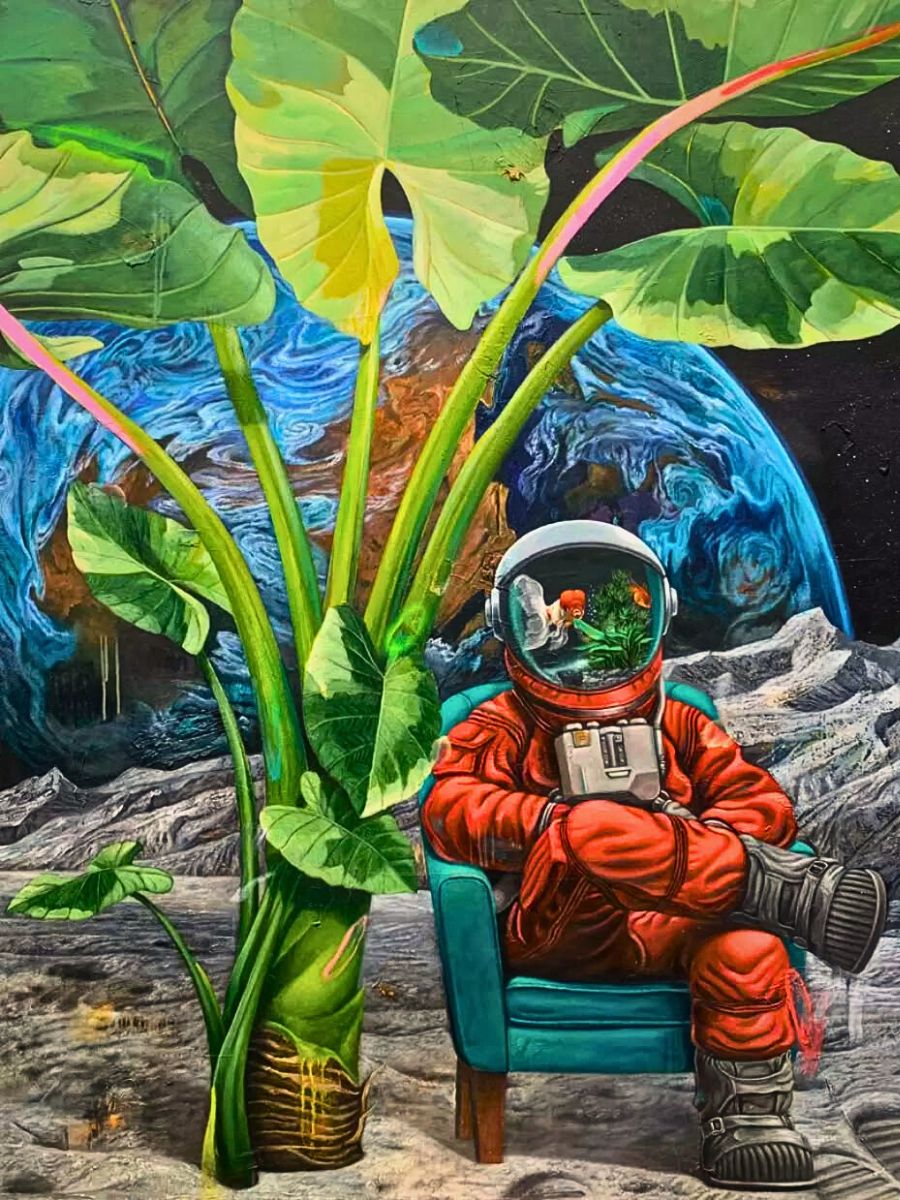
An Exhibition History That Spans Indonesia and Beyond
Agus’ exhibition history spans Indonesia and beyond, with shows in Yogyakarta, Jakarta, Surabaya, Bali, South Korea, Malaysia, Singapore, and the United States. His notable exhibitions include Pemburu Cahaya (Peaceful Seeker #2) at Balebanar Sangkring in Yogyakarta (2018), Suburb Stories at Lestari Grill & Pasta and Art Space in Bali (2014), and participation in group shows like Wonderland: Curious Nature at the New York Botanical Garden in New York.
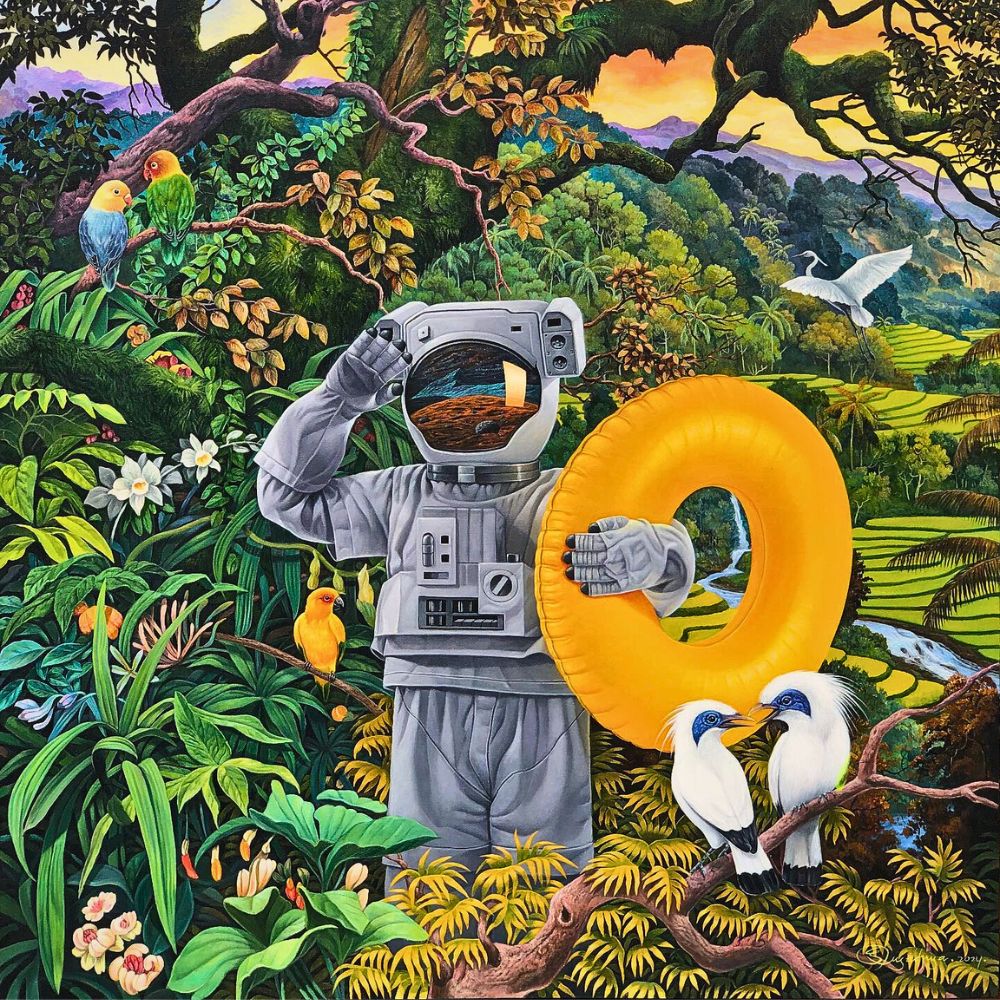
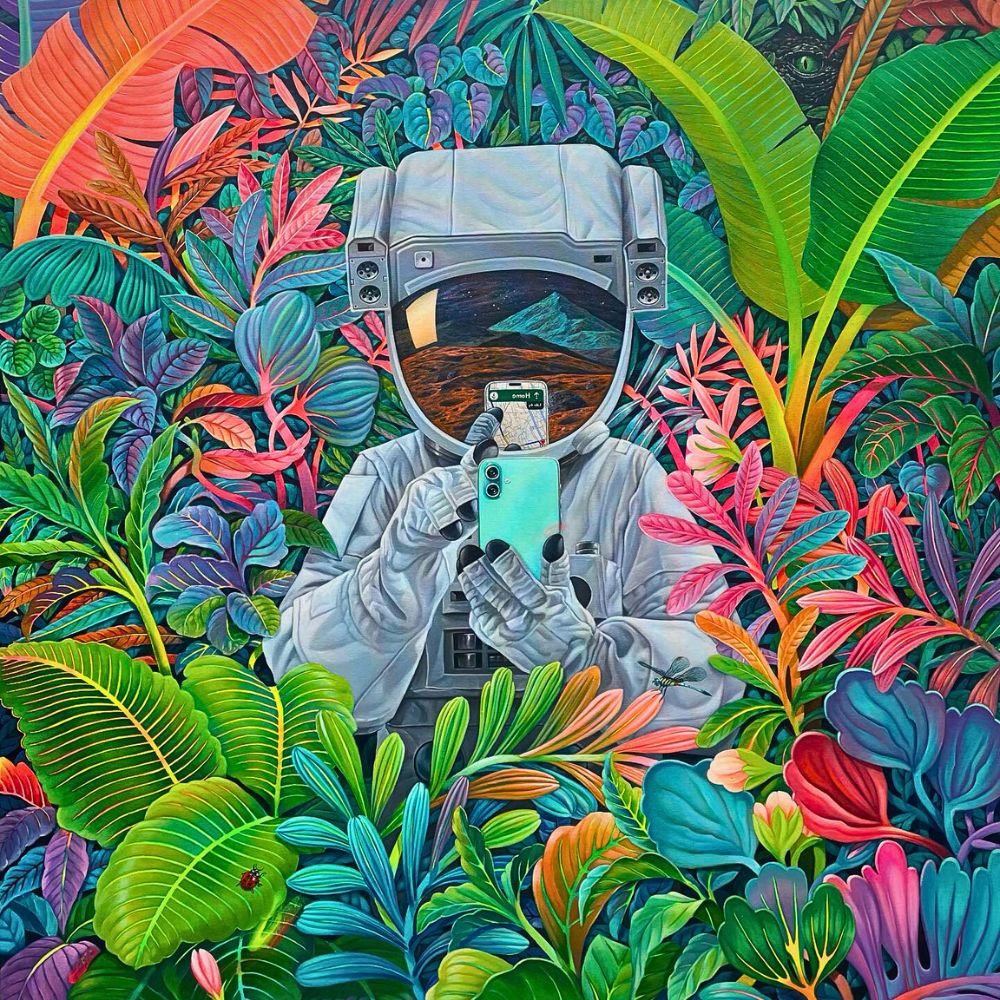
His latest series, Symbiotic Utopia, curated by John Silvis and exhibited at Sapar Contemporary Art Gallery from May 30 through July 7, 2025, presents a layered meditation on humanity’s precarious relationship with nature. While the paintings depict a world lush with Southeast Asian flora and fauna, reimagined as a futuristic paradise where humans and nature coexist in harmony, this utopia is tinged with tension and caution. The astronaut figure, engineered to survive in hostile environments, is a haunting vision of what may be lost if ecological degradation continues unchecked.
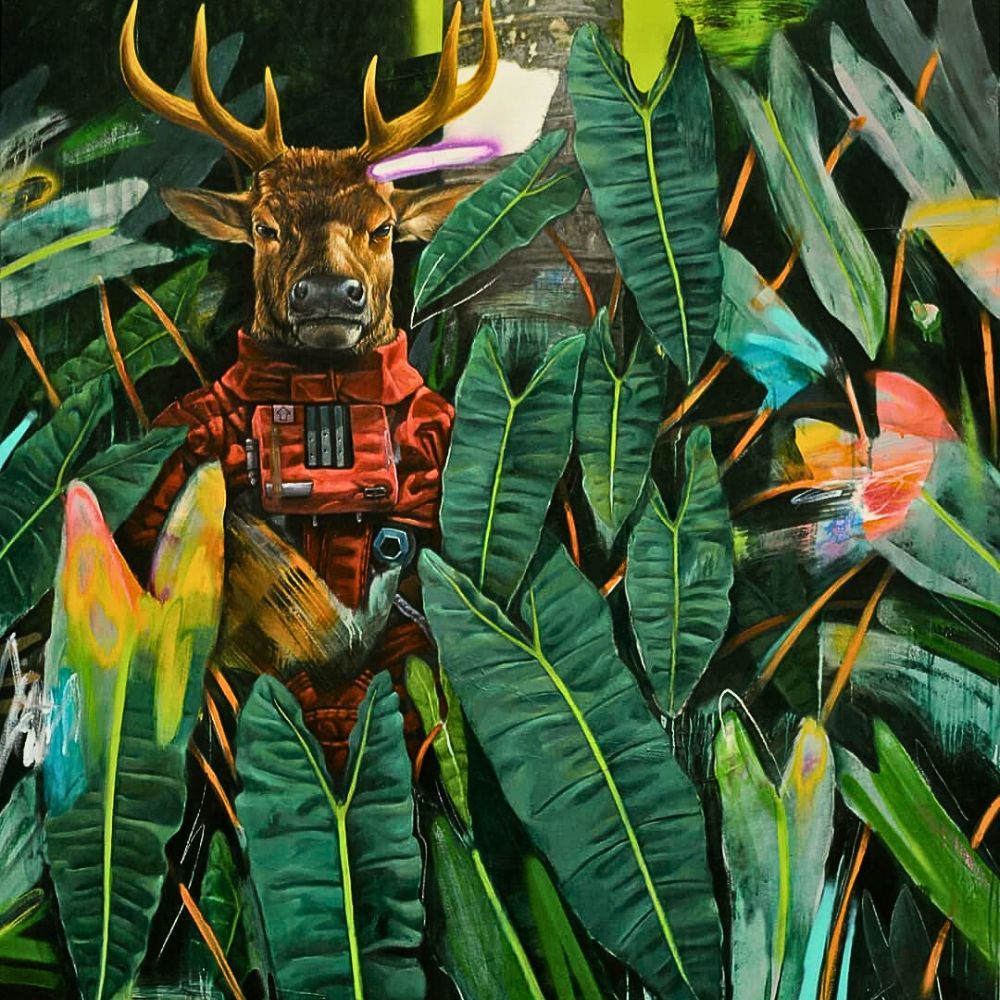
In Hug for Hope (2025), the red-suited astronaut embraces a chimpanzee in the middle of a lush forest, symbolizing humanity’s responsibility to protect endangered species and fragile ecosystems. Elsewhere, the astronaut lounges on a beach chair or interacts with wildlife, embodying a vision of abundance at risk of vanishing under the pressures of environmental neglect.
Agus’ work goes beyond temporal commentary to evoke a spiritual vision of cosmic order—a world where all creatures, including humans, live in mutual respect and balance. His dual vision—of a hopeful, thriving natural world alongside a foreboding warning—is essentially what defines Symbiotic Utopia. Through his elaborate layering, dynamic brushwork, and surreal juxtapositions, he ignites urgent dialogues about the consequences of ecological neglect and the imperative to safeguard the planet’s fading beauty.

Environmental Crisis and a Spiritual Appeal for Harmony
The Indonesian artist’s artwork is not only a reflection on the environmental crisis but also a spiritual appeal for harmony. It echoes the Balinese principles that have shaped his worldview. Merging mythology, contemporary realities, and the exotic richness of Southeast Asian ecosystems, he crafts dreamlike compositions that prod audiences to reconsider humanity’s place in the natural order.

In doing so, he affirms his role as a crucial voice in contemporary painting, with his pieces being a call to action and contemplation; the future of humanity is inseparably linked to the fate of the natural world, and that survival depends on humility, respect, and symbiosis.
All images courtesy of Sapar Contemporary and Agus Putu Suyadnya.

